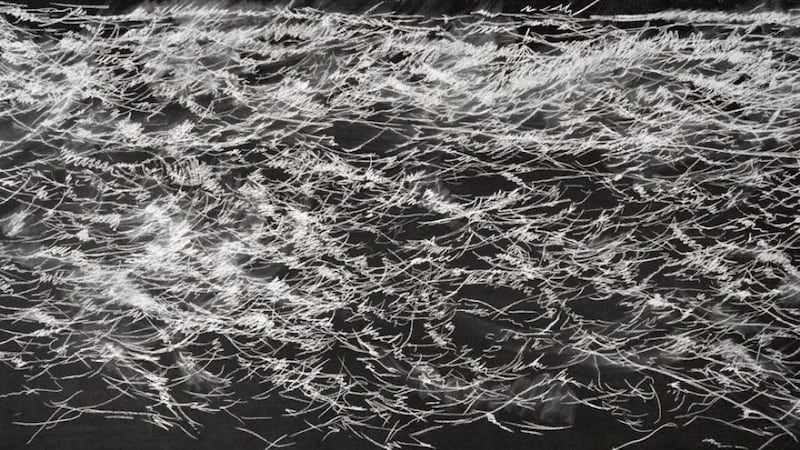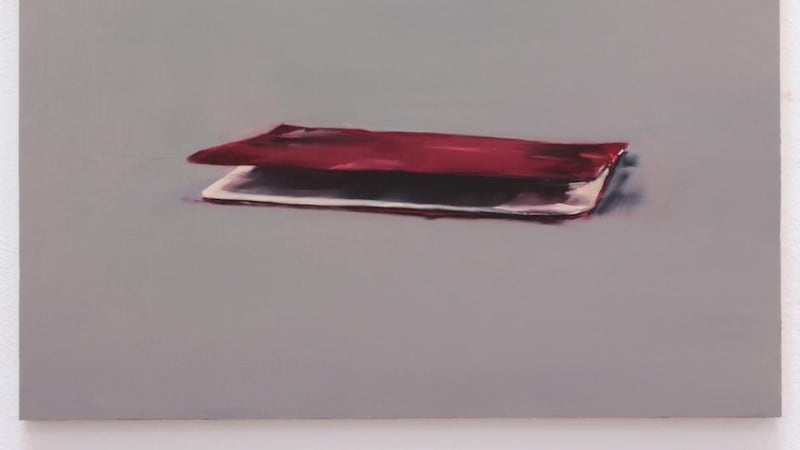Graduate art exhibitions can be ungainly events, as young artists birth their long-gestated babies with anxiety and hope. The clamour to be recognised can lead to works of sensationalism and narcissism, and it can occasionally be a kindness when the media look the other way.
The graduate exhibition of the master of fine arts course at Ballyvaughan's Burren College of Art is an exception. Mollie Douthit from Dakota first caused a stir when she received the Hennessy Craig Award at last year's Royal Hibernian Academy's annual exhibition. She has since been offered a solo RHA exhibition in 2015 and the Tony O'Malley residency in Kilkenny. This year, Saatchi's online curator tipped her as a good bet in its Invest in Art series and then exhibited her work in the Saatchi Gallery. Not bad for an artist who hasn't yet graduated.
Her fellow 2014 MFA graduate Collette Egan, from London, was also selected for inclusion in the 2013 RHA annual exhibition, and for the Something Recalled exhibition that Helen Carey curated at Glór last year.


An isolated college
There is one obvious question here: why would such promising artists choose to shell out €9,000-€18,000 a year to attend such an isolated college?
Egan asked herself that very question. “I was worried at first, and questioned if I should go to a bigger college with more students to gain a larger critical discourse, but actually the college recently arranged an exchange for us with the Royal College of Art in London, and that made me realise quite how special the Burren College actually is.
“You get a lot more one-on-one attention from the tutors here and you have plenty of space and time to work. You might not get the influential London or Dublin gallery owners coming to buy up all the art, but you do get people who really appreciate what you are doing making the effort to reach out.”
Douthit agrees: “That’s the biggest struggle of this place: you have to figure out how to push yourself to get the work seen. I uploaded my work to the Saatchi website and the head curator took note of it and decided to feature me. I’m lucky with the exposure, but the best thing is that my relationship with the painting hasn’t changed. It’s still the same internal battle with myself about how to put down paint in a way I didn’t expect.”
The influence of their two years immersed in the Burren’s stony strangeness is apparent in their work. Egan’s consists of chalk on blackboard renderings of the sea: endless scrawls, lines and scratches evoking the constant pulling and pushing of tides against the Clare cliffs and the Flaggy Shore, and the flaky, eroded seabed rock of the Burren’s limestone slabs.
Her medium, chalk, a form of limestone made from the shells of marine organisms, is appropriate on many levels, particularly as its propensity to fade echoes the impermanence she is so interested in.
Egan is also showing two stop-motion animation works based on her sea drawings, which capture the ebb and flow of time, tide and memory. Some of the initial drawings were done using seabird feathers collected along the shore. A final sequence of grainy Super 8 video footage clarifies Egan’s interest in the links between time, place and the shifting sea-like cadences of memory.
Everday objects
At first glance, Douthit's work seems less influenced by her environment – it is a collection of small oil paintings of everyday objects, vibrantly rendered on neutral limestone-grey backgrounds.
“The Burren has made me figure out the type of work that I need to be making because it is just so clear here, the clarity of the air, and the clarity of the place and the simplicity that comes from stripping away city life. You have to face yourself here. It’s a stripped-back land and it helps you discover things about yourself that you didn’t know were there.”
Her still-life paintings are strangely alluring – the dynamism of their frenzied creation within a single day holds the viewer rapt. Her choice of subject matter and her instinctive technique of working the paint are impulsive and intuitive.
The college’s president, Mary Hawkes-Greene, is proud of her two MFA graduates. “Perhaps they would have got more exposure in a large city,” she says, “but the risk there is you tend to follow the trends; people will all be doing work of a certain type because they know that’s what the galleries are looking for. In the Burren, there are no trends. It’s about honesty. If the work is strong enough it will connect.”
Douthit's first glimpse of success is a vindication for the vision of Hawkes-Greene and her late husband, Michael Greene, to create a world-class art college on the edge of the Atlantic. This is its 20th year and it might prove to be the point when its profile soars.
Douthit stumbled upon it online while searching for post-grad colleges and had a gut response: “I just knew.The Burren has helped me find myself artistically, so I can always return to this place mentally. It allowed me build a toolbox to help me find what I need to create strong work.”
Surface Tension: MFA Graduate Exhibition
is at the
Burren College of Art, Ballyvaughan, Co
Clare until Sunday.
burrencollege.ie
,
colletteegan.com
,
molliedouthit.com

















